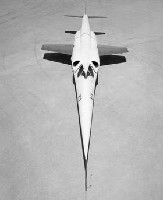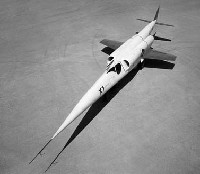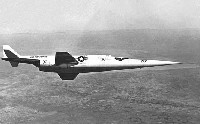|
Global Aircraft -- X-3 Stiletto
Aviation Center
US Attack
US Bombers
US Cargo
US Fighters
US Helicopters
US Patrol/Pursuit
US Reconnaissance
US Tankers
US Trainers
US UAV's
US X Planes
Orbiter Vehicles
WWI Aircraft
WWII Aircraft
Airbus
Antonov
Boeing
Dassault
Ilyushin
Kamov
MiG
Mil
Saab
Sukhoi
Tupolev
Yakovlev
Joint/Rest of World
Entertainment Center
Members Center
New Technologies
Contact Us
Extra Navigation
GAC Engine
X-3 Stiletto Specifications
X-3 Stiletto Achievements
X-3 Stiletto Background
The X-3 was developed under Secret Project MX-656 to investigate thermodynamics (aerodynamic heating) of an aircraft flying at least 30 minutes at double sonic speeds. There was only one Douglas X-3 aircraft ever made. The X-3 made its first flight on September 20, 1952. The X-3 made its first flight at Edwards AFB on October 20, 1952, with Douglas pilot Bill Bridgeman in the cockpit. The X-3 was powered by two afterburning 4,850lb thrust Westinghouse J34-WE-17 turbojet engines, although it was planned to have two afterburning 7,000lb thrust Westinghouse J46-WE-1 turbojets. Because the aircraft was severely underpowered, the aircraft could barely reach supersonic speeds unless it dove from a high altitude. The aircraft was retired after only 51 total flights. Although the aircraft never reached the speeds it was meant to, it contributed greatly to the development of high-speed aircraft. In 1956, the X-3 was put on display at the U.S. Air Force Museum. Summary Copyright © Charles M (JetWhiz) | ||||||||||||||||||||||||||||||||||||||



